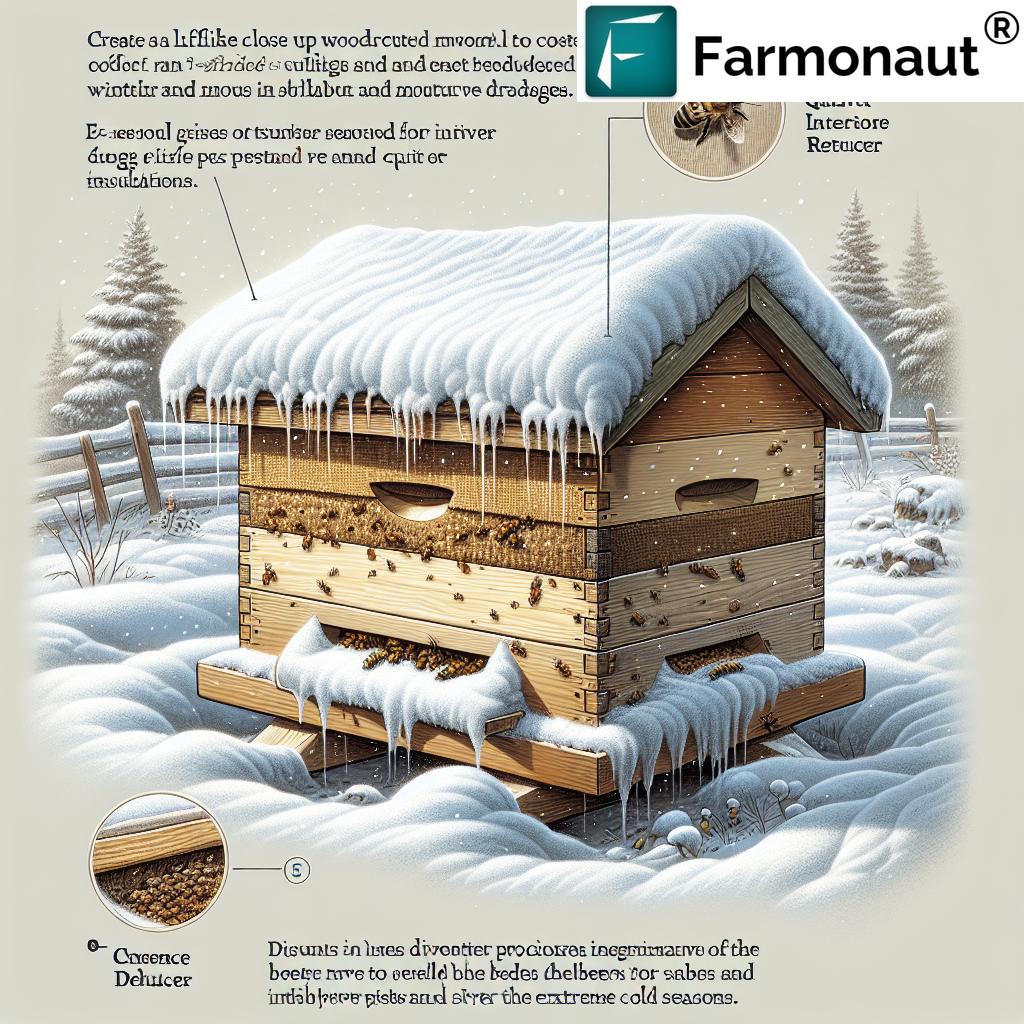How Will Tariffs Impact US Canada Farm Machinery Makers? 2025 Outlook & Industry Trends
“In 2023, US-Canada farm machinery trade exceeded $8 billion, with tariffs threatening up to 15% cost increases.”
Introduction: Why Tariffs Matter for US and Canadian Farm Machinery Makers
The agricultural sector in North America continues to depend heavily on advanced farm machinery to boost productivity, efficiency, and sustainability. Whether it’s the vast wheat fields of the US Midwest or the productive prairies of Canada, farm machinery manufacturers are at the heart of modern farming success. Yet in 2025, rapidly shifting trade policies, economic realities, and new tariffs are reshaping the machinery marketplace, influencing costs, supply chains, and competitive dynamics across both nations.
How will tariffs affect US and Canadian farm machinery manufacturers? This is a critical question not just for industry insiders but also for policymakers, farmers, and anyone invested in sustainable, competitive agriculture. The answer impacts farm equipment prices, technology adoption, investment, and ultimately, the resilience of national and cross-border food systems.
In this comprehensive overview, we unpack how recent and potential future US Canada farm machinery tariffs affect manufacturers, supply chains, and farmers in both countries. We’ll also explore adaptive strategies, 2025 industry trends, and what the outlook may hold for the global agricultural machinery sector— particularly regarding costs, efficiency, and sustainability.
Background: U.S.-Canada Trade Relations and Farm Machinery
The United States and Canada maintain one of the largest bilateral trading relationships globally, with trade volumes in agriculture and industrial machinery among the most significant sectors. Farm machinery—which includes tractors, harvesters, seeders, precision agriculture equipment, and increasingly, digital technologies—forms a crucial segment of this ongoing trade relationship.
Both countries produce a robust supply of agricultural equipment, benefiting from integrated supply chains and shared innovation. Major farm machinery manufacturers rely on cost-effective cross-border flows of:
- Components (like engines, transmissions, electronics, and hydraulics)
- Subassemblies and finished products (including tractors, combines, and seeders)
- Software and digital systems supporting precision agriculture
The historical integration of North American agriculture and machinery supply chains has delivered efficiency, lower costs, and broad technology access for farmers throughout both nations.
However, recent years have seen renewed political tensions, bouts of economic protectionism, and the imposition or reimposition of tariffs on certain farm machinery exports and imports between the two nations. These tariffs—essentially import taxes—raise the cost of goods crossing borders and have become a flashpoint impacting pricing, competitiveness, supply chains, and ultimately, the expenses of farmers.
“Over 60% of Canadian farm machinery imports come from the US—tariff changes could disrupt this vital supply chain in 2025.”
Understanding the critical role tariffs play in shaping the farm machinery manufacturing landscape is essential for stakeholders and policymakers as they navigate a rapidly evolving economic and geopolitical landscape.
Understanding Tariffs and Their Role in Agri-machinery Trade
Tariffs are import taxes imposed by governments on goods crossing their borders. When a country such as Canada imposes a tariff on US-manufactured machinery, the importer must pay a percentage of the equipment’s value as an additional tax—directly increasing the landed cost of that machinery.
In the context of US-Canada agricultural machinery trade, recent tariff rates have ranged from 5% to as high as 10-15%, depending on the product segment and political climate. Even small increases have a ripple effect throughout the industry, inflating:
- Retail prices for farmers (making tools less affordable)
- Component costs for cross-border manufacturing (disrupting supply chains)
- Production expenses for manufacturers (forcing them to adjust operations or absorb losses)
As of 2025, tariffs targeting farm machinery in both directions remain a flashpoint in trade negotiations, affecting thousands of products that underpin modern agriculture. The remainder of this article explores their consequences and the industry’s responses in detail.
How Will Tariffs Affect US and Canadian Farm Machinery Manufacturers?
To fully answer “How will tariffs affect US and Canadian farm machinery manufacturers?,” we must examine five major impact areas: cost increases, supply chain disruptions, domestic innovation, downstream effects on farmers and agriculture, and the growing specter of policy uncertainty.
1. Increased Costs for Manufacturers and Buyers
Tariffs directly increase the cost of machinery exports and imports:
- A Canadian manufacturer shipping combines or harvesters to the United States faces higher costs from US tariffs, making their products less competitive versus local US counterparts.
- US farm machinery manufacturers exporting seeders or precision ag equipment to Canada are subject to Canadian tariffs that raise the final retail price.
For example:
- If a Canadian combine retailing at $350,000 is hit with a 10% tariff on import to the US, the effective price rises to $385,000. US farmers, working with thin margins, may postpone purchases or seek cheaper alternatives.
- Likewise, Canadian farmers importing US-made tractors face similar cost hikes, directly impacting their bottom line.
The immediate result:
- Decreased demand for higher-priced imported equipment
- Lower sales volumes for export-focused manufacturers
- Potential for depressed revenues and constrained growth
Farmers are especially vulnerable—many operate under tight constraints, and increased equipment costs can force delays in necessary upgrades, slowing the advance of operational efficiency and sustainability.
2. Disruption of Integrated Supply Chains
Modern farm machinery manufacturing is characterized by highly integrated, cross-border supply chains. A typical tractor might incorporate US-manufactured engines, Canadian steel, electronics sourced from both sides, and regional final assembly. These components often cross borders multiple times before the machinery reaches its destination.
Tariffs disrupt this flow by:
- Imposing new costs every time parts or sub-assemblies cross the border
- Increasing administrative burdens due to documentation and customs compliance
- Causing delays as goods are held for inspection or delayed awaiting tariff payments
- Prompting manufacturers to re-evaluate supply strategies—sometimes choosing to relocate aspects of production to a single country to avoid tariffs
While consolidation may protect some companies from tariffs, it also causes job losses and economic disruption in the country losing production, weakening regional resilience.
3. Encouragement of Domestic Production and Innovation
One justification of tariffs is the protection of domestic industries:
- They may shield local farm machinery manufacturers from foreign competition, providing a window to invest in capacity or innovation.
- Canadian machinery makers, for example, may capture market share lost by US exporters, encouraging growth and product diversification.
- US manufacturers, likewise, could respond to Canadian tariffs by improving technology, expanding digital solutions, and elevating quality to remain competitive.
However, the boost to domestic production isn’t guaranteed—and may come at the cost of higher input prices and reduced access to global innovation. For smaller and mid-sized firms, it can also mean struggling to scale against larger incumbents.
Those who innovate—embracing areas like precision agriculture, AI, and sustainability—are best positioned to weather ongoing tariff-related turbulence. We believe advanced monitoring and satellite-driven insights can support these transitions effectively.
4. Impact on Farmers and the Agricultural Sector
Ultimately, farmers are the end consumers in the equipment value chain. When tariffs raise the purchase price of new or replacement machinery by 10% or more, the result is often:
- Delayed equipment upgrades or replacements
- Greater maintenance costs for aging fleets
- Reduced adoption of new, energy-efficient or sustainable technologies
- Potential lower productivity and output
- Heightened financial stress, especially for small and mid-size farms
In 2025, rising costs have driven some North American farmers to seek alternative suppliers in third countries—or, where possible, turn to the burgeoning used equipment market. However, this may compromise their ability to leverage the latest precision ag tools, impacting both efficiency and sustainability.
For the wider agricultural sector, these changes can disrupt:
- Food system resilience
- Technology adoption rates
- Sustainability metrics—such as lowering emissions and resource use
- The economic competitiveness of North American farm output globally
It’s here that real-time data tools—like those available from digital platforms—can help farmers further optimize their resources despite higher equip costs. For instance, carbon footprinting solutions can help monitor and manage emissions even in times of rising operational costs.
5. Policy Uncertainty and Investment Hesitation
Uncertainty has become a defining element of the tariff landscape. When manufacturers and investors cannot predict:
- Whether current tariffs will be raised, rolled back, replaced, or reimposed
- Whether trade disputes might limit future export opportunities
- Whether global competitors will seize the moment to capture market share with better pricing
They hesitate to:
- Make capital investments in new production lines or advanced R&D
- Commit resources to training or capacity expansion
- Plan multi-year production runs of new models or digital upgrades
This climate of uncertainty can chill not only growth and innovation but also the willingness of smaller companies to continue serving cross-border markets. For continued expansion, clarity and stability in policy are as important as addressing the actual cost impacts of tariffs.
The table below summarizes these trends and offers a comparative snapshot of recent and potential impacts, aiding stakeholders and policymakers in strategic decision-making.

Manage large and cross-border farm operations with advanced satellite monitoring: Try the Farmonaut Large Scale Farm Management App for comprehensive field mapping, resource optimization, and actionable insights—helping farmers and agri-businesses adapt to evolving supply chain challenges.
Tariff Impact Comparison Table: US vs Canada (2024-2025)
The table below contrasts the estimated impacts of tariffs on major US and Canadian farm machinery manufacturers, making complex trade and industry trends easy to review at-a-glance. Please note values are indicative, reflecting general market estimates and trends as of early 2025.
| Year | Country / Example Manufacturer | Tariff Rate (%) | Avg. Machinery Cost Change (%) | Est. Export Volume Change (%) | Supply Chain Delay (Days) | Policy Outlook / Trend Notes |
|---|---|---|---|---|---|---|
| 2024 | US (Deere & Co.) | 8 | +7 | -5 | 3-5 | Tariff uncertainties slow new investments |
| 2024 | Canada (Buhler Industries) | 9 | +8 | -6 | 4-6 | Push for increased local content, some plant downsizing |
| 2025 | US (AGCO) | 10 (projected) | +8 | -6 | 5-7 | Advanced digital integration to offset higher costs |
| 2025 | Canada (MacDon) | 10 (projected) | +9 | -7 | 6-8 | Efforts to expand to non-US export markets |
| 2025 | Overall North American Sector | 8-10 (avg.) | +8 | -5 to -7 | 4-7 | Push for bilateral agreements and tech innovation |
Adaptive Innovation & Digital Trends for 2025 and Beyond
Despite the challenges tariffs pose, farm machinery manufacturers across the United States and Canada are responding dynamically:
- Investing in flexible production lines—to rapidly adapt to shifting trade barriers and localized supply needs
- Accelerating digital adoption—with the use of AI, telematics, and IoT to boost machinery efficiency and support predictive maintenance
- Pursuing cross-border joint ventures and partnerships—to pool resources and maintain dual-presence in both markets, shielding against one-sided trade shocks
- Focusing on sustainability—including emissions-tracking, fuel savings, and recycling initiatives
- Expanding customer support through digital platforms and remote diagnostics
For 2025 and beyond, digital transformation will be essential to staying competitive—especially as machinery buyers scrutinize every dollar and demand more value from both hardware and software.
- Efficient Fleet and Resource Management: Using satellite tracking and AI-driven analytics, businesses can optimize their machine fleets, reduce downtime, and minimize overall costs—critical for maintaining profitability in a tariff-heavy landscape.
- Traceability Solutions: Leveraging blockchain, traceability in agri-supply chains not only provides consumer confidence but also helps manage risk and audit efficiency for manufacturers navigating complex international trade channels.
Regulatory, market, and consumer forces will continue to promote monitoring, traceability, and environmental impact reporting. Advanced platforms deliver these features in real time, helping both farmers and manufacturers comply, compete, and thrive.
Policy Outlook and Potential Resolutions
Looking ahead to the rest of 2025 and beyond:
- Bilateral & multilateral negotiations (under the United States-Mexico-Canada Agreement and other forums) are ongoing to reduce or eliminate tariff barriers in agricultural machinery trade.
- Policy debates are increasingly acknowledging the need for integrated, resilient supply chains—especially for food security and farm innovation.
- Both governments recognize the agricultural machinery sector as a critical engine of economic growth, rural development, and sustainability.
- Industry advocates continue to push for predictable policies; stable, long-term frameworks support investment and cross-border cooperation.
Despite occasional trade tensions, the trend is toward collaborative problem-solving, especially as farming becomes more technology-intensive and supply chains more complex.
For smaller farmers and rural operators, managing financial risk and securing access to modern machinery is always a challenge in times of rising costs. Modern risk management tools, such as crop loan and insurance verification based on satellite data, can help improve access to finance and reduce fraud, providing relief even when tariffs are high.
Role of Satellite & Digital Monitoring for Modern Farm Machinery
As tariffs reshape traditional cost structures and supply chains, satellite-driven insights and digital monitoring become indispensable for farmers and manufacturers alike. We at Farmonaut are dedicated to making these technologies affordable and accessible to help all stakeholders react quickly and effectively to the evolving landscape of the farm machinery sector.
- Real-Time Monitoring: Leveraging multispectral satellite images, users can monitor crop health, soil conditions, and overall field performance—providing the clarity required for resource management, even when new tariffs or supply issues arise.
- AI-Based Advisory: Farmonaut’s Jeevn AI analyzes satellite data and offers tailored insights to optimize productivity and make informed operational decisions, helping offset higher machinery costs with better efficiency.
- Blockchain Traceability: We support digital traceability for products and machinery components, ensuring transparency and security in increasingly fragmented supply chains.
- Fleet and Resource Optimization: With our app, businesses can track usage, improve deployment, and ensure safety—and manage equipment more profitably even as tariffs fluctuate.
- Environmental Impact Tracking: Our solutions provide real-time carbon footprint monitoring, supporting compliance with sustainability demands and regulations.
Farmonaut’s API and developer documentation empower other agri-tech companies and manufacturers to integrate satellite and weather data directly into their own platforms, enhancing decision-making power across the value chain.


Discover how seamless integration with satellite technology can help your farm, agri-business, or machinery operation thrive—even as US Canada farm machinery tariffs evolve. See our advisory platform for crop and plantation insights.
Frequently Asked Questions (FAQ)
How will tariffs affect US and Canadian farm machinery manufacturers in 2025?
Tariffs are expected to increase machinery costs by 8–10% on average, encourage some shift to domestic production, and add supply chain delays of 4–8 days for cross-border shipments. While this may temporarily benefit some local producers, net industry sales volumes could fall by up to 7% as farmers delay upgrades or turn to non-North American suppliers.
Why are tariffs imposed on farm machinery between the US and Canada?
Tariffs are typically a response to protectionist policy, aimed at protecting domestic industries or in retaliation for other trade measures. They can be part of complex negotiations involving multiple economic and political issues beyond just machinery.
How do increased machinery costs affect North American farmers?
They strain farmer budgets—especially for smaller operators—leading to deferred equipment upgrades, higher maintenance costs, and potentially slower adoption of modern precision agriculture technologies.
Do tariffs lead to more domestic manufacturing in Canada or the US?
They may, incentivizing local investment and innovation over time. However, disruptions to cost-effective cross-border supply chains can also drive up component prices and risk some job losses, especially in regions dependent on cross-border manufacturing facilities.
How can manufacturers and farmers mitigate tariff impacts?
- Explore digital and satellite monitoring solutions (such as Farmonaut’s platform) to improve efficiency and resource management
- Consider alternative suppliers and used equipment markets
- Use advanced market data and financial tools to better forecast costs and manage risk
Are digital solutions essential for modern agriculture in a tariff environment?
Yes. As tariffs and supply chain complexity increase, leveraging real-time data platforms, fleet tracking, and predictive analytics can help farms and businesses adapt more quickly, maintain productivity, and pursue sustainability metrics.
Conclusion: Charting the Future for US and Canadian Farm Machinery Manufacturers
The question of how will tariffs affect US and Canadian farm machinery manufacturers is at the heart of cross-border agricultural policy and industry strategy in 2025 and beyond. Tariffs on farm machinery significantly influence the competitive landscape for manufacturers and the affordability of equipment for farmers. While tariffs can temporarily protect domestic industries, their longer-term impact often includes increased costs, supply chain disruptions, and policy uncertainty—dampening growth and slowing the innovation needed for productivity, efficiency, and sustainability.
Reducing tariff barriers and fostering digital transformation—across both the United States and Canada—is key to supporting resilient, forward-looking agriculture. Embracing satellite-driven insights, real-time management, and smart financing will empower farmers, manufacturers, and supply chain partners to thrive in an uncertain yet opportunity-rich landscape.
For those in the farm machinery sector, the tools for adaptation are already here: advanced digital monitoring, smart resource optimization, next-generation traceability, and AI-driven advisory systems. Farmonaut’s solutions are at the forefront—affordable, scalable, and tailored for the multi-layered challenges of a rapidly evolving industry.
The future of agricultural machinery manufacturing is one where collaboration, technology, and adaptability rule. By minimizing unnecessary trade barriers, supporting innovation, and investing in sustainability, North America’s farms and factories can continue to lead globally in agri-tech and food security.
Explore our advanced, satellite-driven agriculture and supply chain solutions:
- Farmonaut Advisories – Crop, Plantation, & Forestry Insights
- Carbon Footprinting – Monitor & Improve Sustainability
- Fleet Management – Optimize Machinery & Resource Use
- Product Traceability – Blockchain-Backed Supply Chains
- Crop Loan & Insurance – Satellite-based Verification & Risk Reduction
- Farmonaut API – Integrate Satellite Insights
- Developer Docs – Weather & Monitoring API
Download the Farmonaut App for real-time agro insights:
Stay ahead of change—embrace technology, reduce uncertainty, and ensure your farm or agri-enterprise is ready for the future, whatever tariff policy brings.










